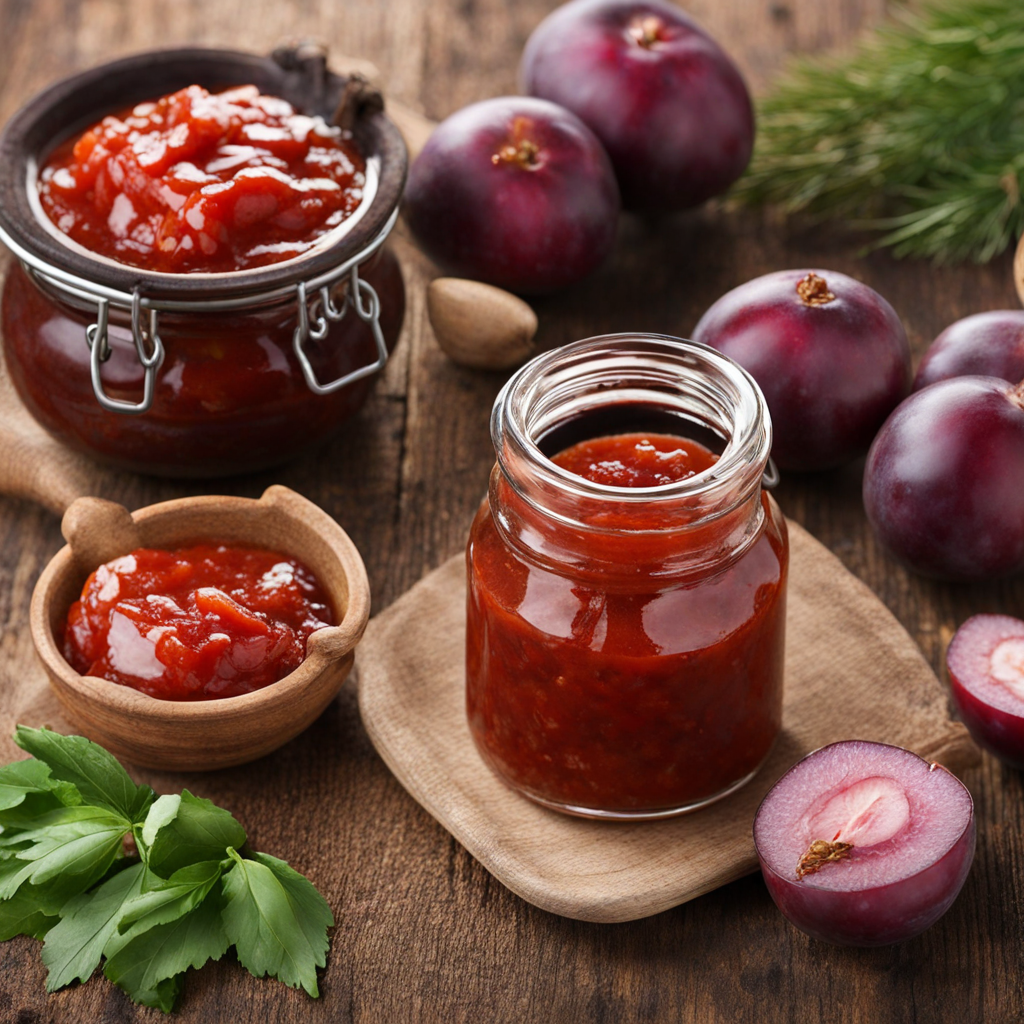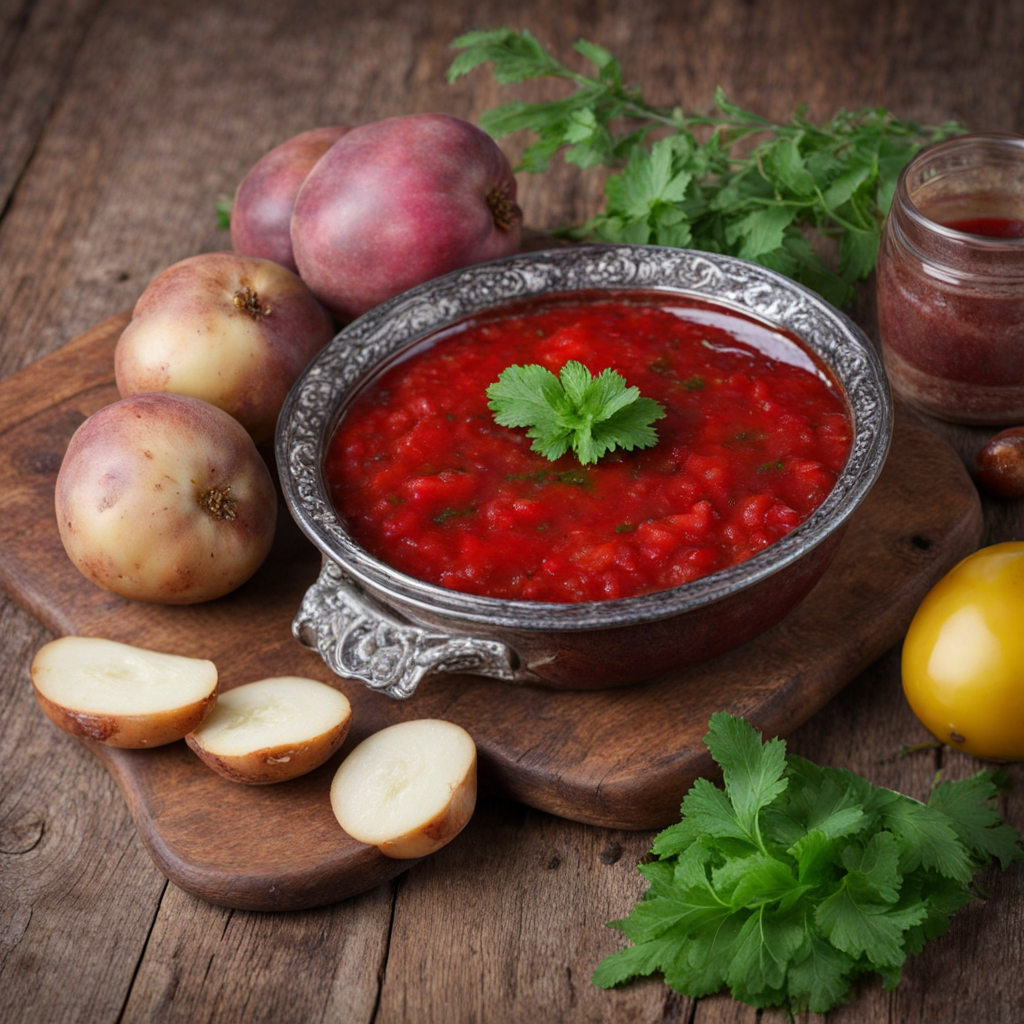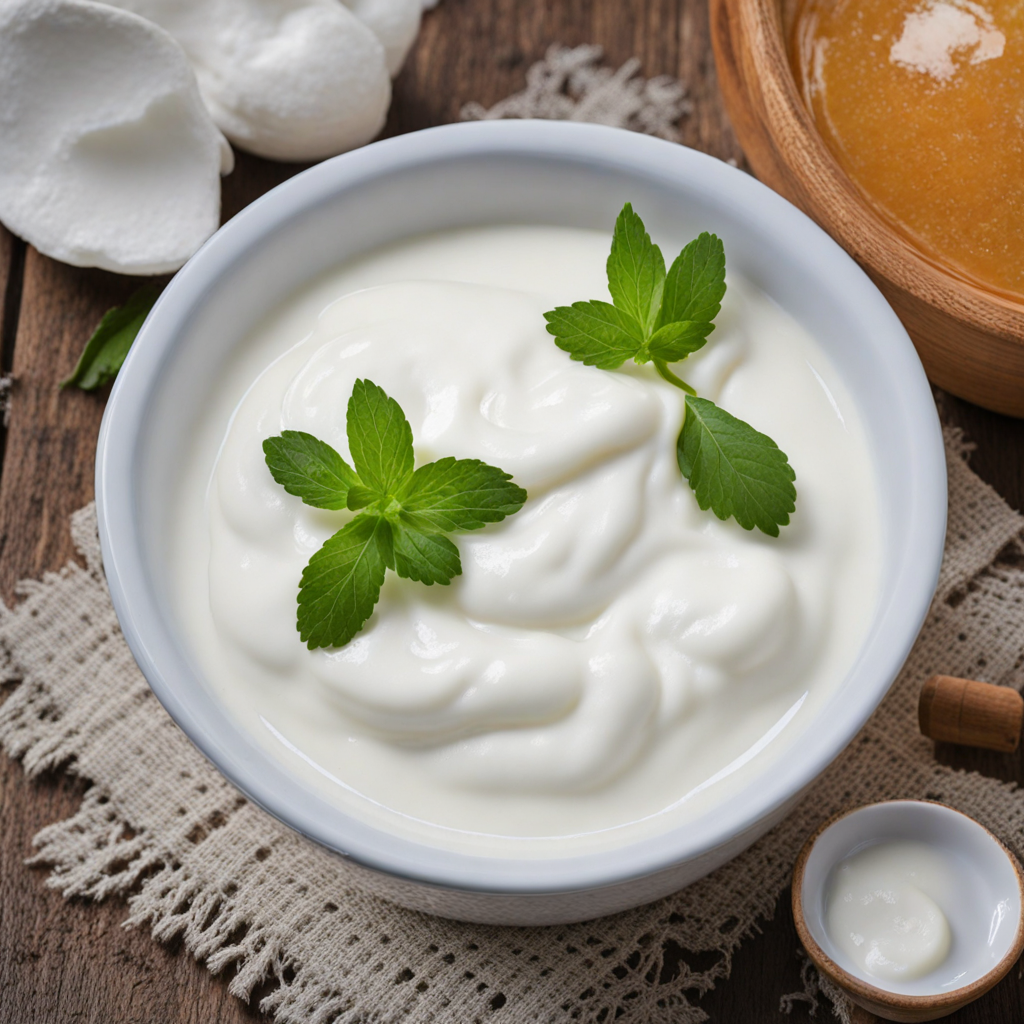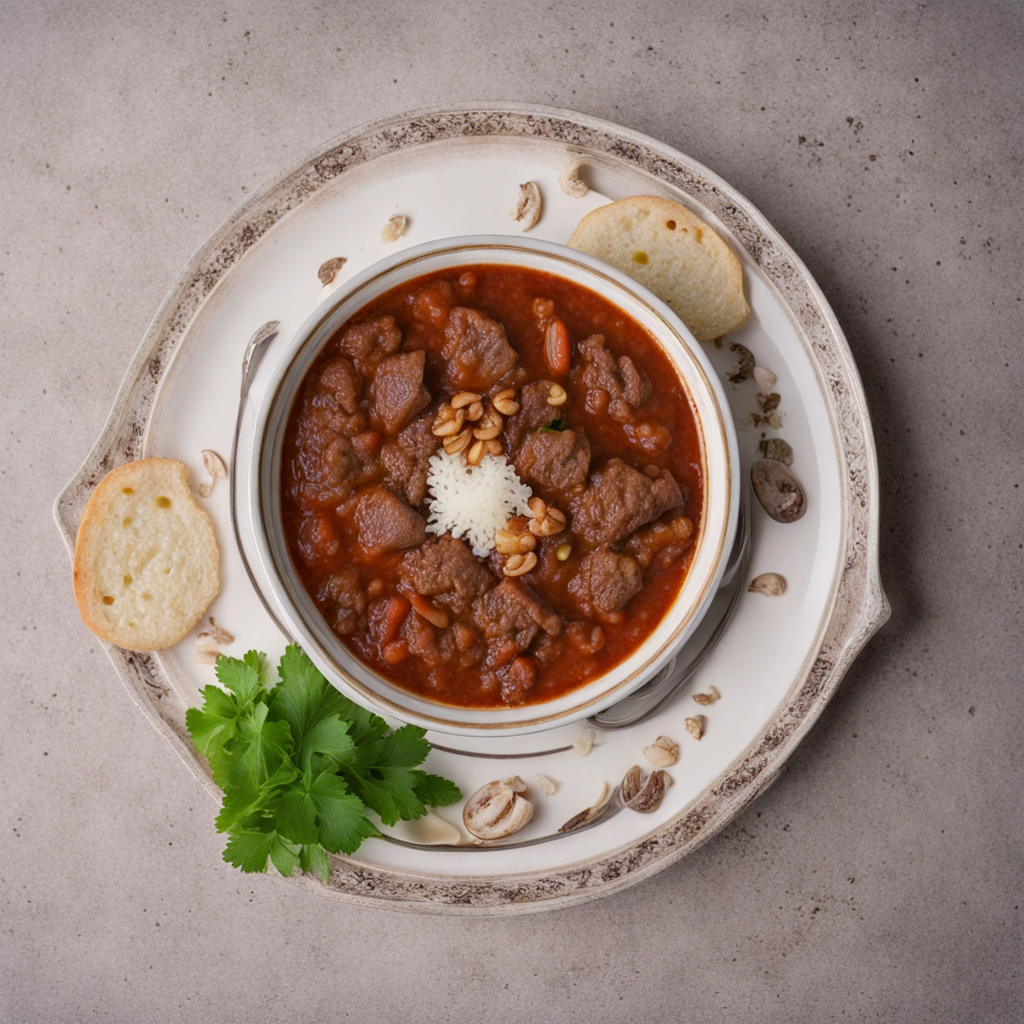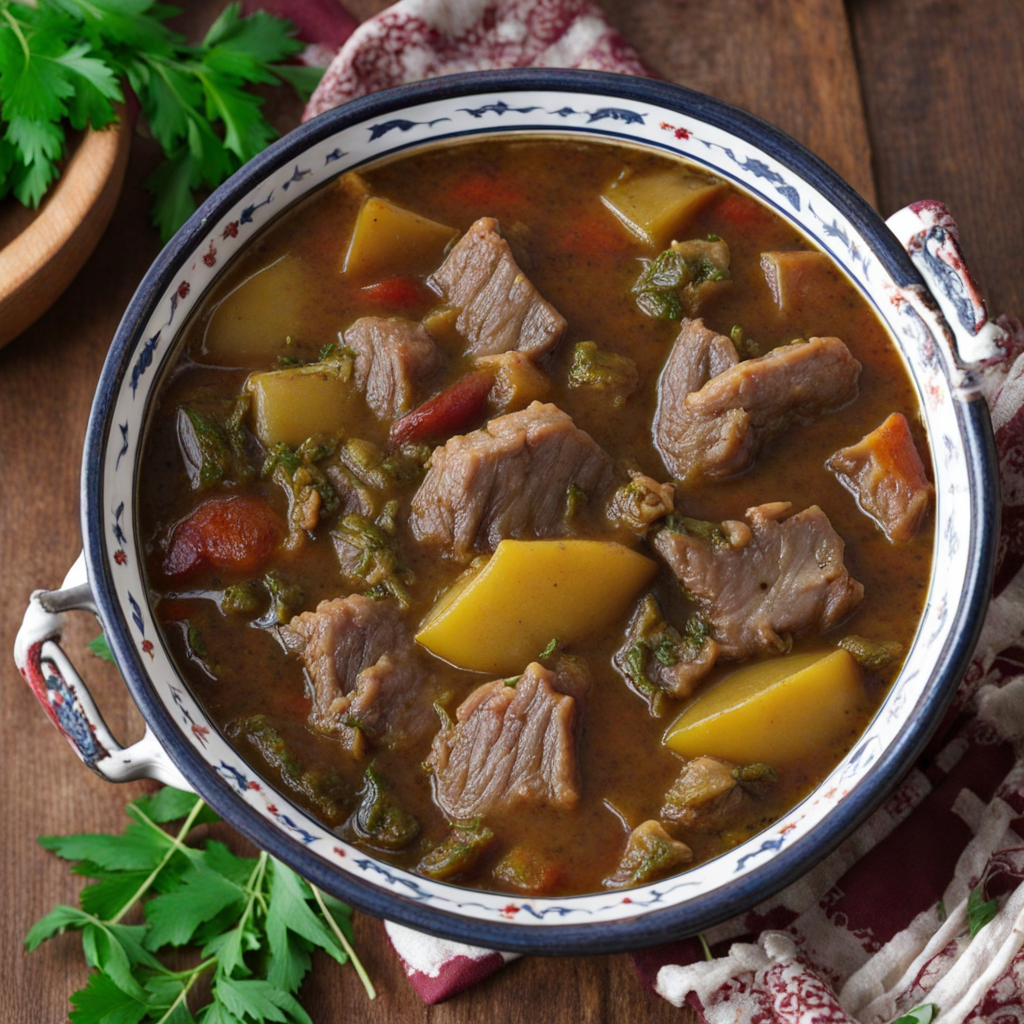Tkemali
Tkemali is a vibrant and tangy Georgian condiment made primarily from the tart plums known as 'tkemali' or sour plums. This sauce captures the essence of Georgian cuisine, featuring a delightful blend of flavors that combine the natural sourness of the plums with a medley of fresh herbs and spices. Typically, the plums are cooked down and blended with ingredients such as garlic, coriander, dill, and chili peppers, creating a complex flavor profile that is both refreshing and invigorating. The result is a thick, luscious sauce that can be enjoyed in various ways, elevating any dish it accompanies. What sets Tkemali apart is its unique balance of sweet, sour, and savory notes, making it an ideal companion for grilled meats, roasted vegetables, or even as a dip for bread. Its versatility allows it to enhance a wide range of dishes, adding not only a burst of flavor but also a beautiful splash of color. The sauce's bright green or deep red hues are as pleasing to the eye as they are to the palate, showcasing the rich agricultural heritage of Georgia. For those seeking to explore new tastes, Tkemali is a gateway into the world of Georgian flavors, embodying the country's rich culinary traditions. The sauce can be enjoyed fresh or preserved, allowing food enthusiasts to savor its unique taste year-round. Whether used as a condiment, marinade, or a cooking ingredient, Tkemali invites adventurous eaters to experience the bold and lively flavors of Georgia, making it a must-try for anyone looking to broaden their gastronomic horizons.
How It Became This Dish
The History of ტყემალი (Tkemali): A Georgian Culinary Treasure Tkemali, a vibrant and tangy plum sauce, holds a cherished place in Georgian cuisine and culture. This delicious condiment, made primarily from the sour plums known as “tkemali,” is not just a staple on Georgian tables; it embodies the essence of the country's culinary traditions, agricultural practices, and social customs. The history of tkemali is a rich tapestry woven from the threads of Georgia's past, showcasing its regional variations, cultural significance, and the evolution of its preparation. #### Origins and Early History The origins of tkemali can be traced back to the lush orchards of Georgia, a region renowned for its diverse fruit cultivation. The sour plum, or “tkemali,” which is the cornerstone of the sauce, belongs to the species Prunus cerasifera and is believed to have been cultivated in this area for centuries. Archaeological evidence suggests that plums were domesticated in the Caucasus around 2000 BC, and the area’s favorable climate contributed to the development of various plum varieties. Tkemali is often associated with the ancient Georgian kingdom of Colchis, known for its rich agriculture and trade. Historical texts from the 1st century AD, such as those by the Roman historian Pliny the Elder, mention the region's exceptional fruits. The use of tkemali likely evolved from the necessity to preserve the sour plums, especially during the winter months when fresh produce was scarce. The process of making tkemali—cooking the plums with herbs and spices—created a tangy sauce that could accompany a variety of dishes, thereby ensuring that the flavors of summer could be enjoyed year-round. #### Cultural Significance Tkemali is more than just a condiment; it is an integral part of Georgian identity. In Georgian culture, food is a central element of social gatherings, celebrations, and family traditions. Tkemali is often served alongside traditional dishes such as khinkali (dumplings), khachapuri (cheese-filled bread), and grilled meats, enhancing the flavors and adding a refreshing acidity. Its presence at the table signifies hospitality and generosity, key values in Georgian culture. The preparation of tkemali is traditionally a communal activity, often involving families gathering to pick plums in late summer and early autumn. This practice fosters a sense of community and connection to the land, as families engage in the age-old tradition of preserving the harvest. The ritual of making tkemali, with its vibrant colors and bold flavors, reflects the joyful spirit of Georgian cuisine, which emphasizes freshness and seasonality. Additionally, tkemali is celebrated for its health benefits. Rich in vitamins, antioxidants, and dietary fiber, the sauce is a testament to the Georgian ethos of utilizing local, natural ingredients for both nourishment and flavor. It is often touted as a remedy for various ailments, further embedding it into the cultural psyche of the nation. #### Development Over Time As Georgia underwent various historical changes—including invasions, political shifts, and the influence of neighboring cultures—the preparation and use of tkemali evolved. During the Soviet era, traditional recipes faced challenges as industrialization and urbanization altered food production and consumption patterns. Despite these changes, tkemali endured as a beloved staple, with many families continuing to prepare it according to ancestral methods. In contemporary Georgia, tkemali has experienced a renaissance. The rise of the farm-to-table movement and a renewed interest in traditional foods have led to a resurgence of this classic condiment. Artisanal producers now craft tkemali with an emphasis on quality and authenticity, often sourcing plums from local orchards. This modern approach has also brought about variations of the sauce, incorporating different herbs and spices, such as coriander, garlic, and even chili peppers, to cater to diverse palates. The global appreciation for Georgian cuisine has further propelled tkemali into the international spotlight. As more people discover the flavors of Georgia, tkemali has found its way onto the menus of restaurants around the world, often served as a dipping sauce or a flavorful accompaniment to grilled meats and vegetables. This newfound popularity has sparked interest in traditional Georgian culinary practices, encouraging a new generation to explore their heritage and the rich history behind this beloved sauce. #### Regional Variations While tkemali is recognized as a national dish, regional variations exist, each reflecting local tastes and ingredients. For instance, in the Kakheti region, known for its wine production, tkemali may feature a sweeter profile, incorporating local honey or even wine. In contrast, the Samegrelo region, famous for its bold flavors, often includes more spices and herbs, resulting in a spicier version of the sauce. Moreover, the types of plums used can vary significantly, with some regions favoring specific varieties for their unique flavors. The green tkemali, made from unripe plums, is particularly popular for its intense sourness, while the red tkemali offers a more balanced flavor profile. This diversity showcases the adaptability of tkemali, allowing it to resonate with various culinary traditions within Georgia. #### Conclusion The history of tkemali is a testament to the resilience and creativity of Georgian culture. From its ancient origins in the fertile lands of the Caucasus to its modern revival as a symbol of national pride, tkemali has endured through centuries of change. It embodies not only the flavors of Georgia but also the values of community, hospitality, and respect for nature. As Georgia continues to share its culinary heritage with the world, tkemali stands out as a vibrant and essential component of its gastronomic identity. Whether enjoyed at a festive supra (feast) or as a simple accompaniment to a home-cooked meal, tkemali remains a delicious reminder of the rich history and culture of Georgia—a true culinary treasure waiting to be savored.
You may like
Discover local flavors from Georgia


